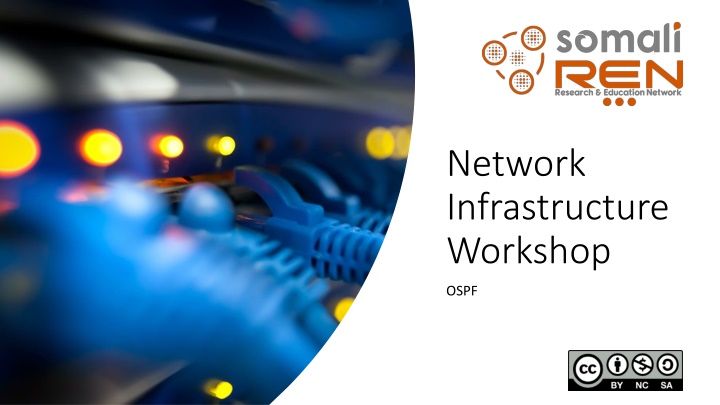
Implementing OSPF for Optimal Network Efficiency
Explore the benefits of implementing OSPF with a focus on reducing routing overhead, increasing convergence speed, and containing network instability. Learn about OSPF operation categories and key terminology such as Router ID, Neighborship, and Topological database. Master OSPF examples and understand wildcard masks for subnetting.
Download Presentation

Please find below an Image/Link to download the presentation.
The content on the website is provided AS IS for your information and personal use only. It may not be sold, licensed, or shared on other websites without obtaining consent from the author. If you encounter any issues during the download, it is possible that the publisher has removed the file from their server.
You are allowed to download the files provided on this website for personal or commercial use, subject to the condition that they are used lawfully. All files are the property of their respective owners.
The content on the website is provided AS IS for your information and personal use only. It may not be sold, licensed, or shared on other websites without obtaining consent from the author.
E N D
Presentation Transcript
Network Infrastructure Workshop OSPF Immagine 7
Here are three of the biggest reasons to implement OSPF in a way that makes full use of its intentional, hierarchical design: To decrease routing overhead To speed up convergence To confine network instability to single areas of the network OSPF
OSPF operation is basically divided into these three categories: Neighbor and adjacency initialization LSA flooding SPF tree calculation OSPF Operation
OSPF Basics OSPF Basics
Link A link is a network or router interface assigned to any given network. Router ID The router ID (RID) is an IP address used to identify the router. Neighbor Neighbors are two or more routers that have an interface on a common network Adjacency An adjacency is a relationship between two OSPF routers that permits the direct exchange of route updates. Designated router A designated router (DR) is elected whenever OSPF routers are connected to the same broadcast network OSPF OSPF Terminology Terminology
Backup designated router A backup designated router (BDR) is a hot standby for the DR on broadcast, or multi-access, links. Hello protocol The OSPF Hello protocol provides dynamic neighbor discovery and maintains neighbor relationships. Neighborship database The neighborship database is a list of all OSPF routers for which Hello packets have been seen. Topological database The topological database contains information from all of the Link State Advertisement packets that have been received for an area. Cont
Example 1: 192.168.10.0/24 will be: 192.168.10.0 0.0.0.255 Example2: 192.168.5.0/27 will be: 192.168.5.0 0.0.0.31 Example3: 192.168.3.0/30 will be: 192.168.3.0 0.0.0.3 Wildcard











